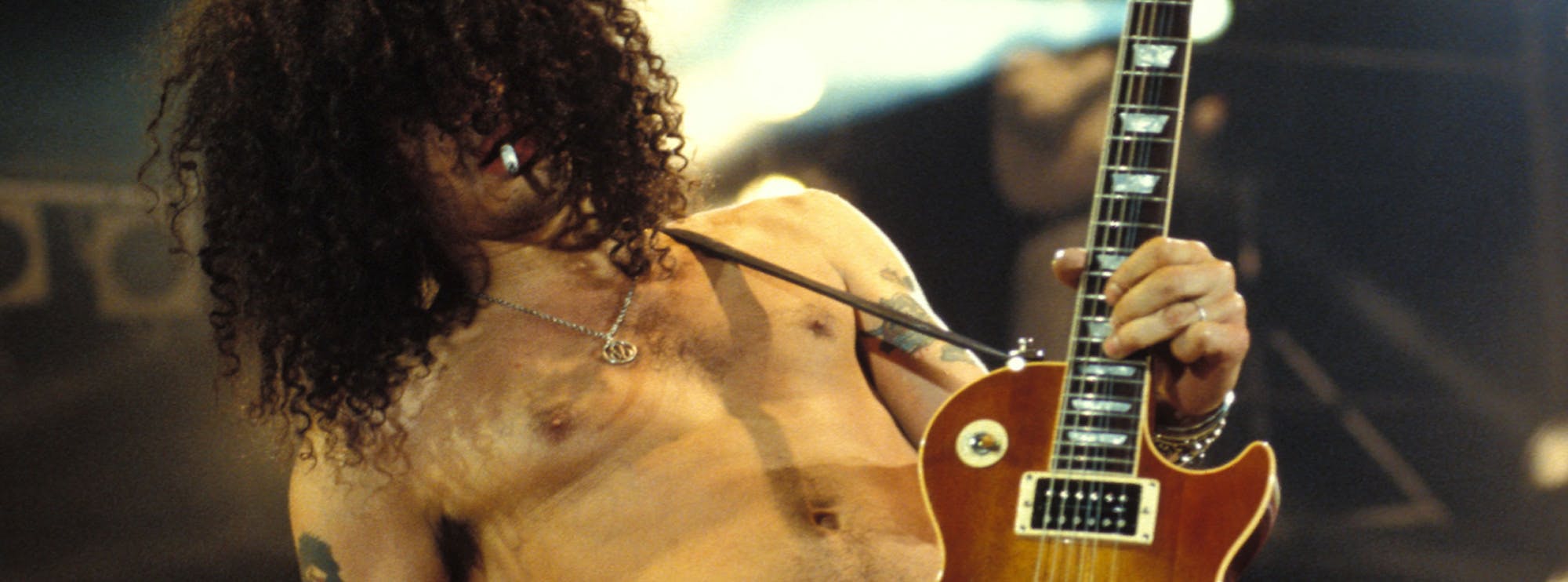Legs by ZZ Top
"Legs" by ZZ Top is an iconic rock song featuring signature guitar tones, catchy riffs, and memorable solos. The guitar work by Billy Gibbons is known for its rich blues influence and unique style, making "Legs" a fantastic song for any guitarist looking to expand their skills and master essential rock techniques. This in-depth lesson breaks down the song's guitar techniques and gives you the tools to play it note for note, capturing the essence of Gibbons' playing style. Danny Gill breaks down this classic ZZ Top track in this exclusive Lick Library video tutorial.
About the Guitarist – Billy Gibbons
Billy Gibbons, ZZ Top’s legendary guitarist, is renowned for his soulful, bluesy playing and impeccable tone. His technique combines rock and blues elements with a Texas flair, influencing generations of guitarists. Gibbons has a unique approach to phrasing and feel, making use of gritty tones and nuanced techniques like vibrato and pinch harmonics. Learning "Legs" not only immerses you in Gibbons’ style but also builds a foundation in expressive rock and blues techniques that will benefit any aspiring guitarist.
Guitar Techniques in "Legs"
Vibrato
Vibrato is a crucial part of Gibbons’ playing style, adding expression and character to sustained notes. This technique involves subtly bending the note up and down to create a "shaking" effect. In "Legs," Gibbons uses vibrato to give phrases an extra layer of emotion, bringing them to life and adding depth. Practicing vibrato will enhance your control and help you express feeling in each note, giving your playing a voice-like quality.
String Bending
String bending is a staple technique in "Legs," allowing the guitarist to reach notes beyond their standard pitch. Gibbons often uses bends to create a bluesy tension and release, which is key to his expressive sound. Mastering bends will improve your pitch control and finger strength, as well as add a dynamic feel to your solos, mimicking the human voice’s natural inflections.
Pinch Harmonics
Gibbons is known for using pinch harmonics, a technique that creates a high-pitched "squeal" by lightly touching the string with the thumb while picking. In "Legs," this effect is used to emphasize specific notes, adding a biting edge to the riffs. Learning pinch harmonics can elevate your playing by adding unique tonal variety and enhancing certain musical phrases.
Slides
Slides are prevalent throughout "Legs" and contribute to its smooth, flowing sound. By sliding from one note to another, Gibbons connects phrases seamlessly, giving his playing a sense of motion. Practicing slides improves finger coordination and timing, allowing you to move between notes with precision and fluidity.
Alternate Picking
Alternate picking involves using up and down strokes in a consistent manner, which is essential for achieving a balanced tone and fluidity in faster passages. In "Legs," alternate picking keeps the rhythm tight and adds clarity to intricate sections. Mastering this technique will improve your speed, control, and ability to play with precision, especially in faster, riff-heavy songs.
Hammer-Ons and Pull-Offs
Hammer-ons and pull-offs add speed and smoothness to phrases without the need for continuous picking. In "Legs," these techniques are used to create legato lines that feel connected and melodic. Practicing hammer-ons and pull-offs will allow you to achieve faster runs and transitions, making your playing sound more fluid and natural.
Power Chords
Power chords provide the foundation of the rhythm sections in "Legs," offering a gritty, powerful sound characteristic of rock music. These chords are essential for creating a full sound with minimal effort, relying on only two or three notes. Learning power chords will enhance your rhythm playing, enabling you to play solid, driving chords that underpin rock riffs and progressions.
Palm Muting
Palm muting is used in parts of the rhythm section to create a percussive, controlled sound by lightly resting the palm on the strings near the bridge. This technique in "Legs" adds rhythm and articulation to the groove, giving the riff a tight, punchy feel. Practicing palm muting will improve your rhythm control and add a layer of depth to your playing.
Bluesy Bends
Bluesy bends, a hallmark of Gibbons’ style, involve bending notes with subtlety to create tension and emotion. This technique is applied to create soulful inflections within the lead lines. Bluesy bends add character to your playing and build an emotional connection with the listener, allowing you to explore expressive nuances within your solos.
Benefits of Learning These Techniques
Learning the techniques in "Legs" offers numerous benefits to guitarists of all levels:
- Vibrato and String Bending: Enhance expressiveness and add emotional depth.
- Pinch Harmonics: Create tonal variety and add emphasis to key notes.
- Slides and Alternate Picking: Improve fluidity and control in transitions.
- Hammer-Ons and Pull-Offs: Enable faster and smoother legato passages.
- Power Chords and Palm Muting: Build a solid rhythm foundation and tight articulation.
- Bluesy Bends: Develop an emotional connection in your soloing and add soulfulness.
Guitar Techniques Used in "Legs"
- Vibrato
- Alternate Picking
- Hammer-Ons
- Pull-Offs
- Power Chords
- Palm Muting
- Pinch Harmonics
- Slides
- String Bending
- Bluesy Bends
This lesson on "Legs" by ZZ Top is a deep dive into the techniques that shape the sound of one of rock’s most influential guitarists. By mastering these techniques, you'll not only learn to play this iconic song but also develop skills that enhance your overall guitar playing journey.
About The Tutor
Tutor Profile
Danny Gill
Danny Gill is, without a doubt, the most loved tutor by our community. With an incredible array of DVDs and web lessons for LickLibrary covering a wide variety of topics all of which he covers with incredible detail, it's no wonder he carries as much respect as he does. As...




